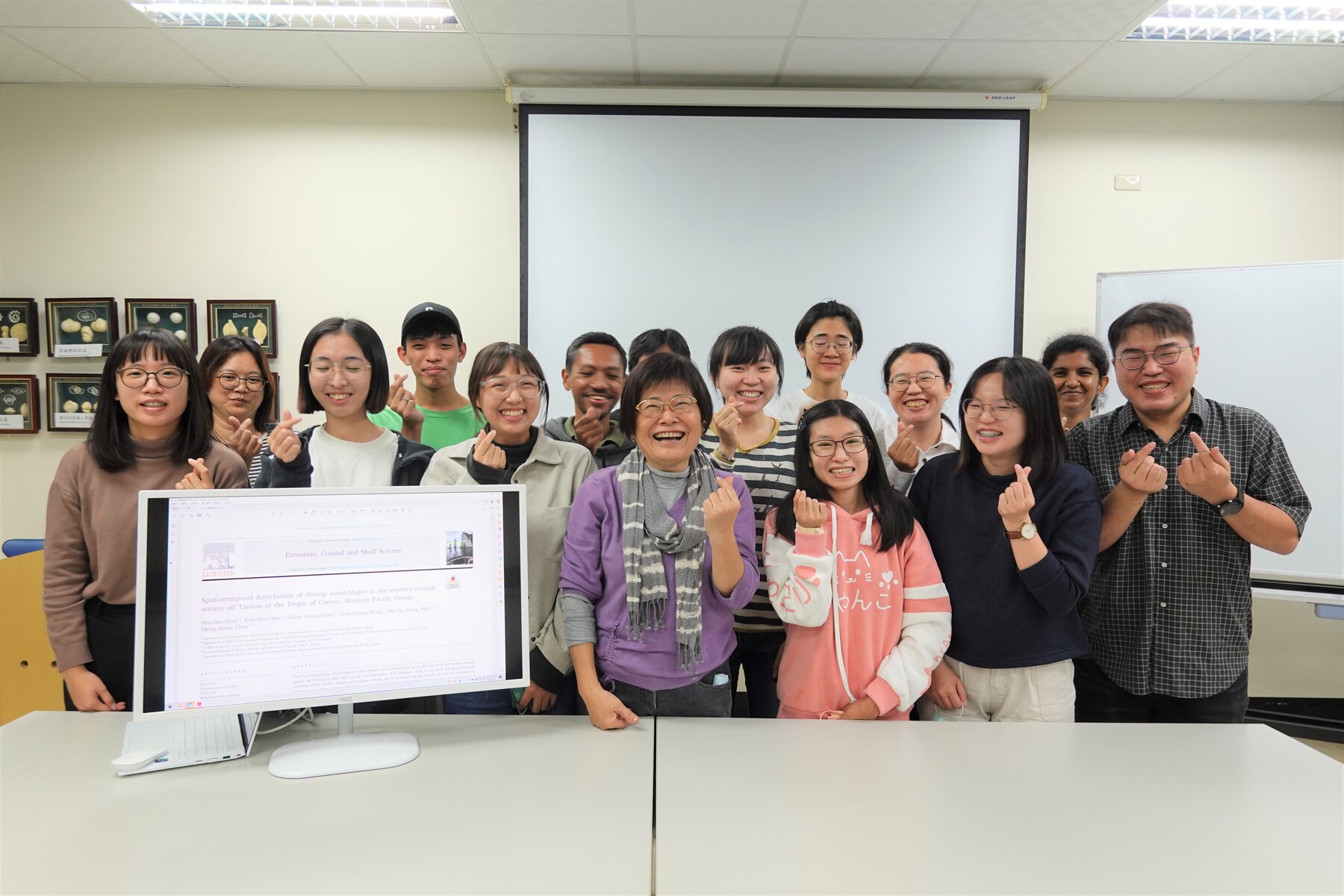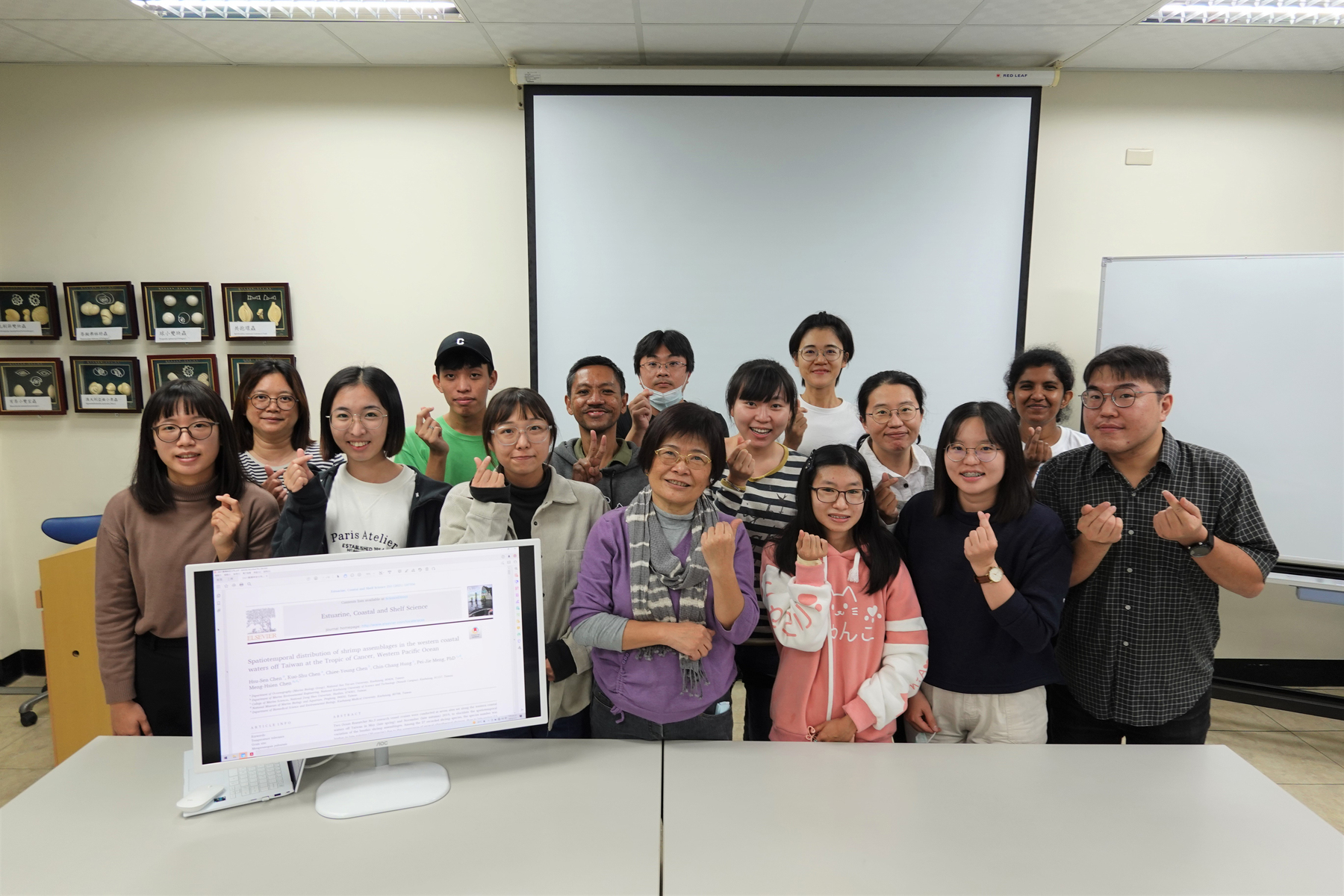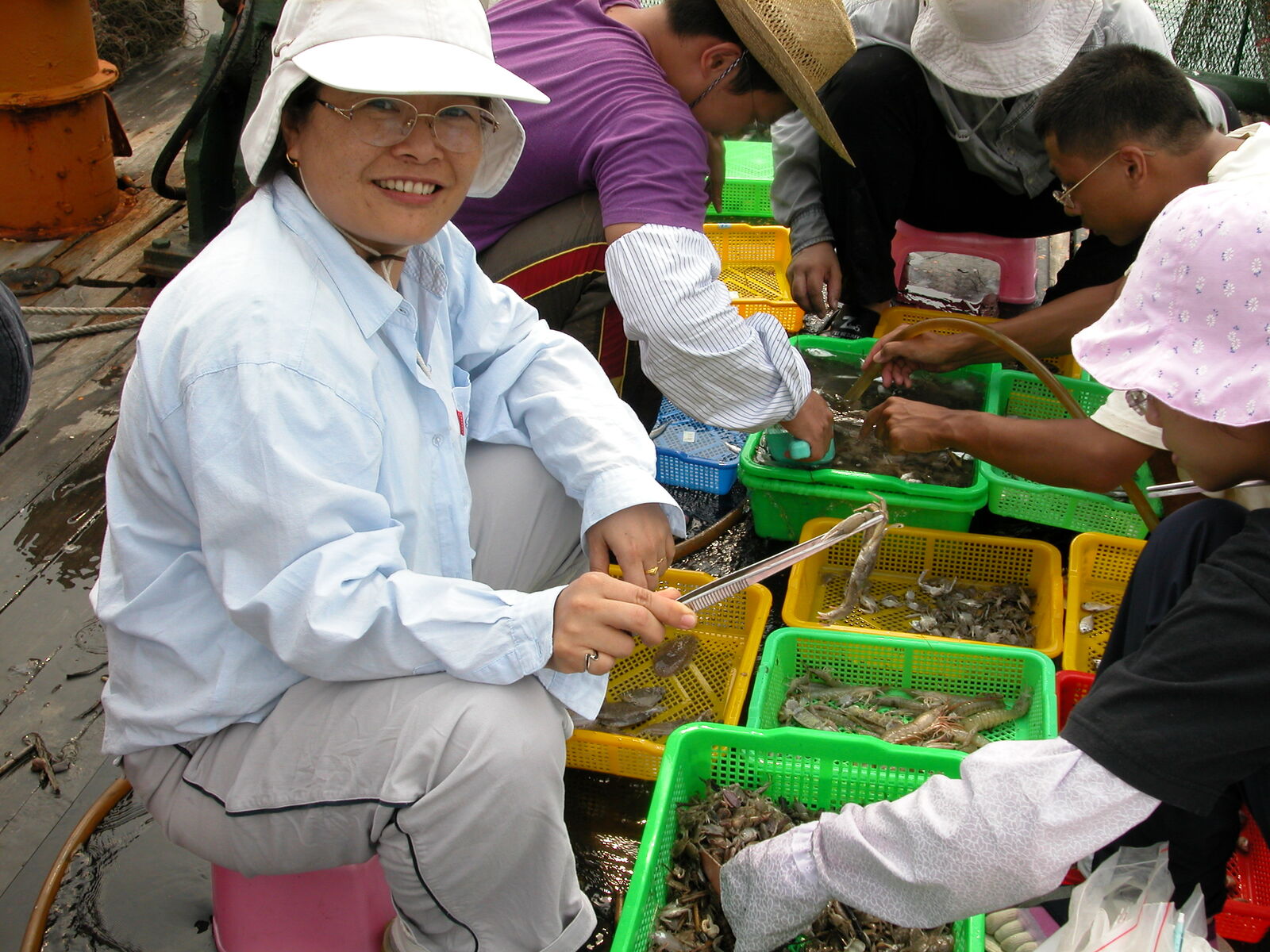NSYSU team discovered that global warming results in the northward retreat of spear shrimp





2023-05-16
The peak season of wild-caught spear shrimp in Taiwan is usually between the Lunar New Year and Tomb Sweeping Festival. The spear shrimp’s taste has been described as sweet and mild, which attracts many epicures. A decline in the spear shrimp population has been noted in recent years. The research team led by Dr. Meng-Hsien Chen, a distinguished professor of the Department of Oceanography at National Sun Yat-sen University (NSYSU), conducted the research to analyze the state of the Parapenaeopsis hardwickii, also known as spear shrimp (sword shrimp), in the nearshore coastal waters off Taiwan’s southwestern coast. The team unexpectedly discovered that the spear shrimp, which were previously identified 20 years ago in Jiading, Kaohsiung, had retreated 55.5 km northward and were found in Wanggong, Changhua, because of the effects of sea water warming due to climate change. This result has been published in the international journal “Estuarine, Coastal and Shelf Science.” For the first time, tropical shrimp’s poleward movement in the past 20 years was proven by scientific research. Even if the coastal water temperature rises by 1 degree Celsius, it will result in species retreat. Studying the impact of global warming on benthic shrimp assemblages in the coastal waters off Taiwan’s southwestern coast is now considered a significant topic in oceanography.
Spear shrimp is the wild marine shrimp species, including Parapenaeopsis hardwickii, Parapenaeopsis cornuta, and Parapenaeopsis sinica, which cannot be cultured. Spear shrimp usually make their annual migration to the Taiwan Strait coastal area from November to May. It has high economic value due to its unique sweetness and firm yet tender texture. Unfortunately, the population of this species has dramatically declined in recent years, making it difficult for epicures to indulge in the delicious taste of spear shrimp. “The population of wild-caught spear shrimp was abundant in Jiading,” said Professor Chen. Over the past 20 years, spear shrimp have held significant value to fishermen across the Jiading to Zuoying area. However, the significance of spear shrimp has gradually declined in recent years. According to the results of the research conducted by Professor Chen’s team, Parapenaeopsis hardwickii was barely identified in the coastal area near Jiading due to the sea water rising. The species has shifted its range northward from Jiading to the offshore areas of Wanggong and Taisi, covering a distance of 55.5 km and moving approximately 0.5 degrees north in latitude.
“The research findings are persuasive and provide solid scientific evidence,” said Professor Chen. In May and November 2019, the research team took the research vessel Ocean Researcher No.3 to conduct bottom trawl sampling at seven observation sites, ranging from Fangliao in Pingtung, southern Taiwan, to coastal areas in central Taiwan such as Wanggong and Wuchi. The members collected varied marine environmental data during spring and autumn, such as temperature, salinity, sediment grain size, and organic matter, to record the spatiotemporal variation of the benthic shrimp assemblages. The collected data proved that climate change and large-scale seasonal water mass variation changed the seasonal distribution of subtropical benthic shrimp, resulting in the northward retreat of tropical shrimp species.
Professor Chen stated that the 27 species of shrimp identified by the team in 2019 were categorized as the North group and the South group with distinct dominant shrimp species. The North group is situated north of Chiku (23°09′N), and is composed mainly of subtropical shrimp, dominated by Parapenaeopsis hardwickii and P. sinica. In the coastal area south of Jiading (22°52′N), the environment is annually affected by the warm Kuroshio Branch Current (KBC) and South China Sea Surface Current (SCSSC), keeping the water temperature to >25 °C, even in winter, except for January. The species in this area is known as the South group, and is composed of mainly tropical shrimp dominated by Metapenaeopsis palmensis (thick-shelled shrimp), which cannot live in water temperatures <25 °C. According to the previous records, the spear shrimp species could be identified in the area south of Jiading from 2002 to 2003. Afterwards, researchers found no species except for Metapenaeopsis palmensis. The spear shrimp species can only be caught to the north of Chiku, especially at Wanggong. This proved the north range shift of the species of approximately 0.5 degrees in latitude.
“Will the spear shrimp eventually disappear from Taiwan’s coastal area?” Professor Chen emphasized that the research team will conduct more studies on this topic and observe the shrimp population variation. Professor Chen mentioned the speculation that the spear shrimp will possibly head to deep oceans with lower water temperatures. Besides, Professor Chen stated the importance of avoiding heavy fishing. The most critical period of growth for spear shrimp is the two to three years after their birth and when they reach the spawning phase. If fishermen can use trawling nets with larger mesh, juvenile shrimps would be able to escape and survive until spawning. It is an effective method to sustain the species. Another suggestion is regulating the period of fishing restriction to address climate change, maintain fishermen’s livelihoods, and preserve natural resources.
For more information, please refer to the journal:
https://www.sciencedirect.com/science/article/pii/S0272771421002092#!
